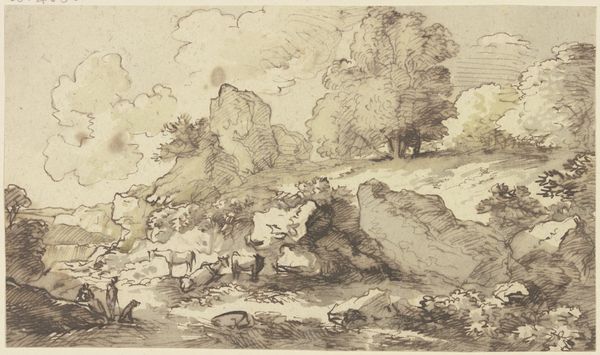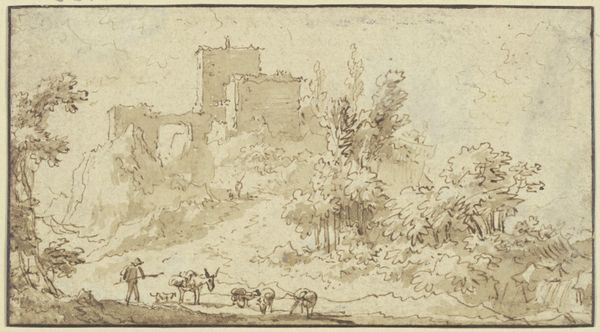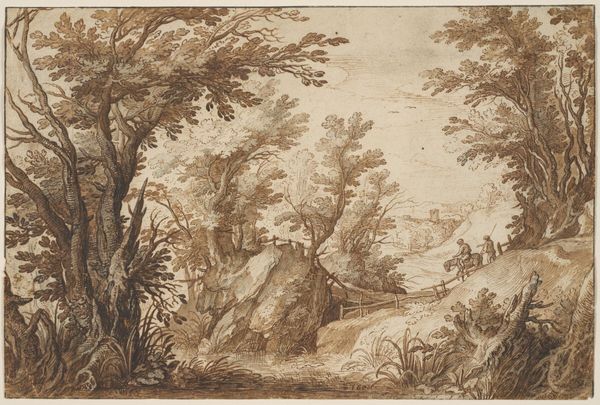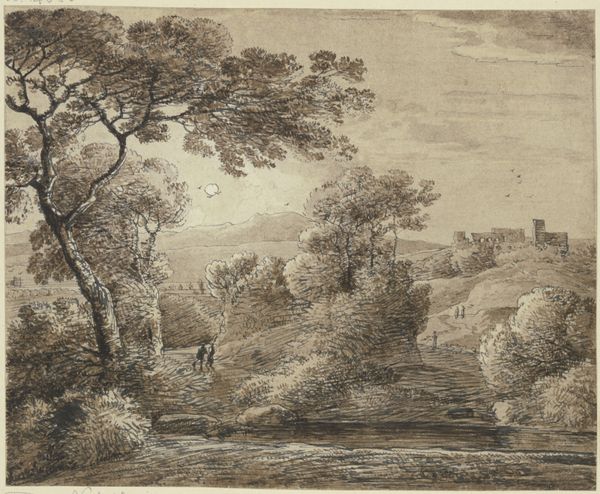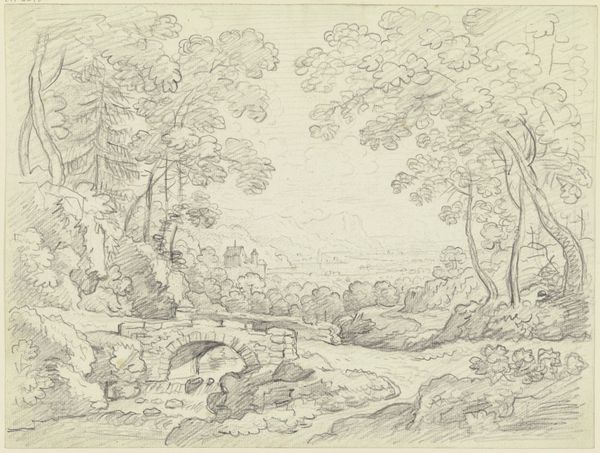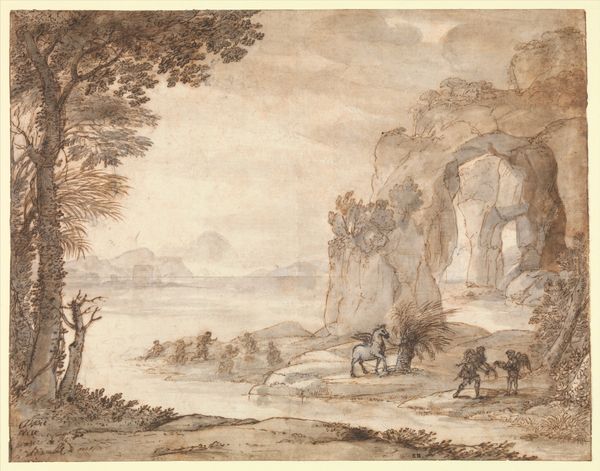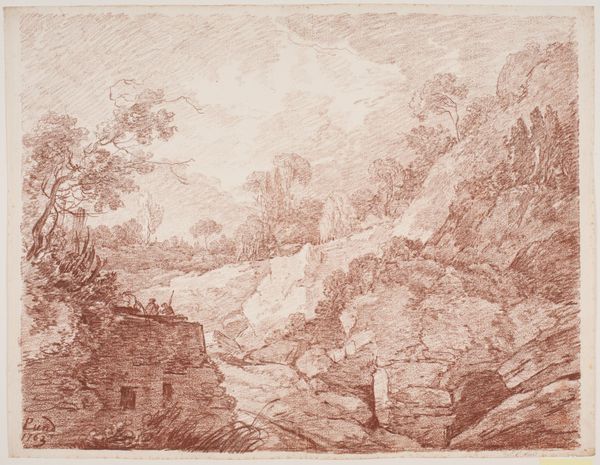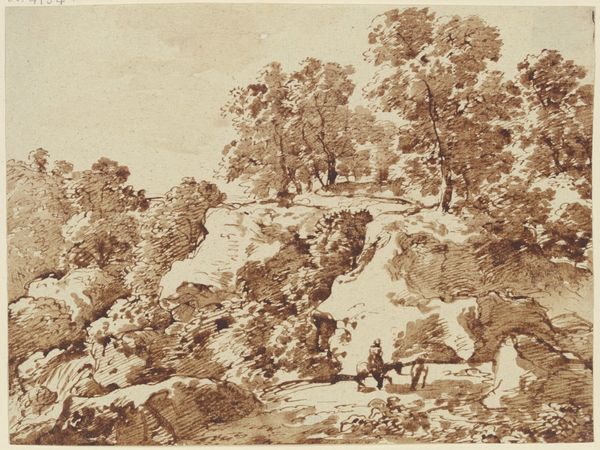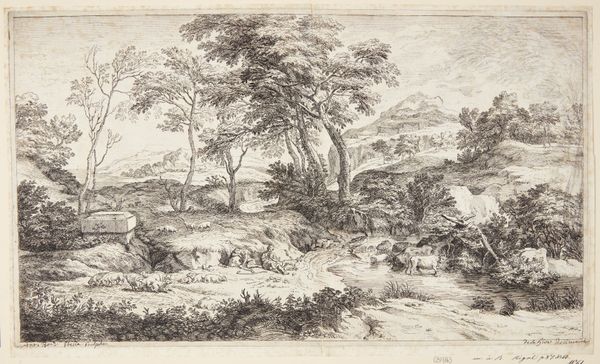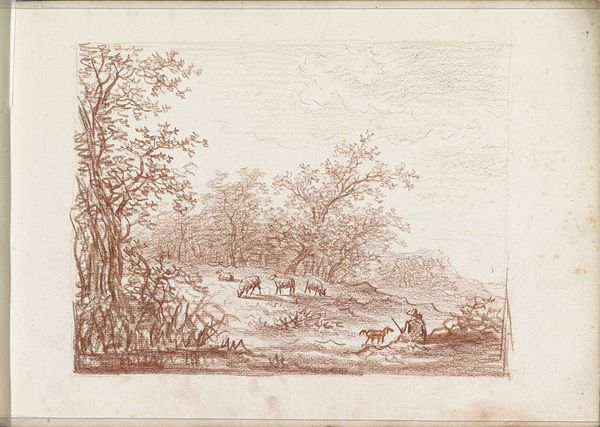
drawing, plein-air, watercolor, ink
#
drawing
#
plein-air
#
landscape
#
watercolor
#
ink
#
watercolor
Dimensions: overall: 12.1 x 18.9 cm (4 3/4 x 7 7/16 in.)
Copyright: National Gallery of Art: CC0 1.0
Curator: Look at this delicate landscape—it's entitled "Carew Castle, Pembrokeshire" rendered in ink and watercolor, very much in the plein-air style. Editor: My initial impression is one of quiet ruin and nature reclaiming its space, and perhaps of impermanence. There's something elegiac about the brown monochrome palette and the way the castle almost dissolves into the foliage. Curator: Absolutely, and considering landscape painting of the time, the lack of people within the castle walls or proudly waving flags, for example, allows it to evade the pomp connected to traditional patriotic sentiments. There is no exaltation here, merely an acceptance of the ruin's present state and a reflection upon time, nature, and political changes. Editor: Focusing on process, you can almost trace the artist's hand, from the choice of location to the materiality of watercolor. Did they grind the pigment themselves? Sourcing the materials in proximity to the site lends another layer to its story. How was labor involved? Was it commissioned, painted in leisure, for the artist's private reflection? Curator: It provokes crucial questions about ownership, doesn't it? It demands the questions, who owns this scene, these ruins, and the stories it whispers about power? Furthermore, whose narrative are we prioritising when engaging with landscapes like this? Are the local voices part of the history, are they truly accounted for here? Editor: Thinking of production in this sense of a dialogue—of materials, methods, landscapes, history—creates an openness about understanding the landscape. I am more interested in landscape that doesn't only convey history but also creates historical possibilities for diverse interpretations. Curator: Precisely. We see a convergence of historical and material realities, as well as, I would suggest, space for collective discourse and perhaps, ultimately, transformative reimagining. Editor: I agree. Focusing on process as history encourages the viewer to become part of that history, even for a short time.
Comments
No comments
Be the first to comment and join the conversation on the ultimate creative platform.
